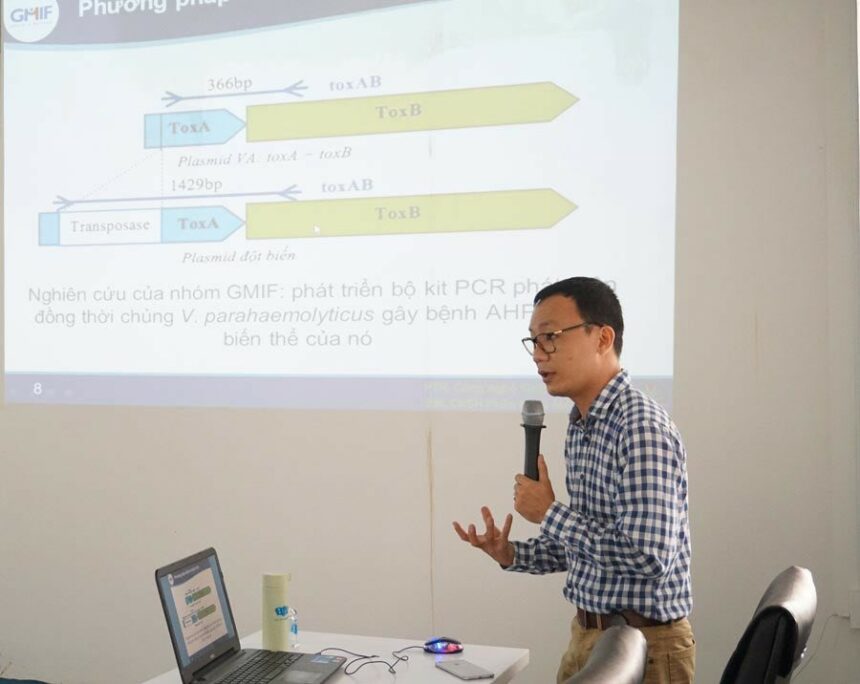On the evening of October 27th, 2022, in Hanoi, the Viet Nam Union of Science and Technology Associations, in collaboration with the Ministry of Science and Technology, the Vietnam General Confederation of Labour, and the Central Committee of the Ho Chi Minh Communist Youth Union, organised the Closing Ceremony and awarding of the Viet Nam Science and Technology Innovation Award in 2021. The event also commemorated the 30th anniversary of the establishment of the Viet Nam Technical Innovation Support Fund (VIFOTEC).
During the ceremony, the organising committee decided to confer awards on 45 entries, including four first prizes, eight second prizes, 14 third prizes, and 19 consolation prizes.
Associate Professor Tran Van Hieu and his team won the Consolation Prize for their project, “Research on developing a test strip to rapidly detect two toxins, ToxA and ToxB, of Vibrio parahaemolyticus bacteria, which cause acute hepatopancreatic necrosis disease (AHPND) in farmed shrimp in the Southwest region.”


The project has contributed to the creation of the world’s first test strip capable of detecting two toxins, ToxA and ToxB, responsible for causing acute hepatopancreatic necrosis (AHPND) due to Vibrio parahaemolyticus. The study also sought to determine the prevalence of AHPND disease caused by Vibrio parahaemolyticus in prawn farming in the Southwest region. This test strip operates on an antigen-antibody interaction-based method. When ToxA and ToxB toxins are present, they elicit an immune response, leading to the production of specific antibodies against the toxins. This principle allows the test strip to be customised for detecting other diseases by replacing the type of antibody used. Consequently, the test strips and the technology behind them have significant potential for application. Currently, as there are no test strips for AHPND caused by Vibrio parahaemolyticus available globally or in Viet Nam, the socio-economic impact of the research results can be substantial. Moreover, early diagnosis in farm ponds helps farmers take proactive measures to prevent and treat diseases promptly, thereby effectively contributing to the economic development of farmer households and localities.



Leave a Reply